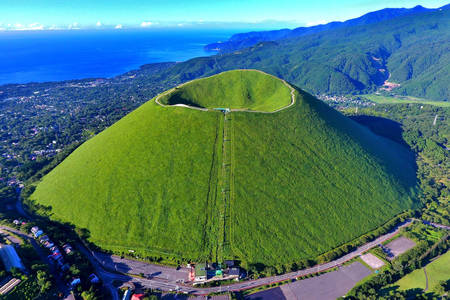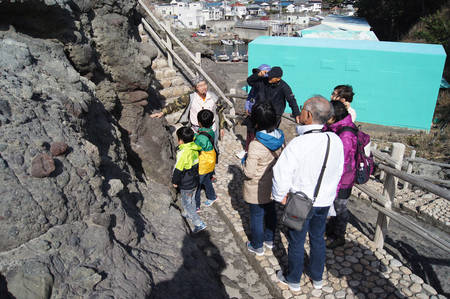Description
The Izu Peninsula is located at the northern edge of the Philippine Sea tectonic plate and at the far northern end of the Izu-Bonin volcanic arc. It is the only place in the world where two active volcanic arcs collide and where the various phenomena resulting from this can be observed. The geological history of the past 20 million years can be divided into three periods: Neogene submarine volcanism; large-scale Quaternary terrestrial volcanism, after the collision with Honshu at about 1 Ma; and the scattered activity of the monogenetic volcanoes, continuing from 150,000 years ago to present. The continuous volcanic geological history of the area is unique in the world. Nowhere else is it possible to trace the numerous and dramatic changes of volcanism for such an extended period. Due to this widespread volcanic activity, the area is also one of the most famous destinations in Japan for hot springs. The collision with the Honshu arc has developed many active faults and has led to an uplift of the topography. Research on these faults, such the discovery of the large-scale lateral slip (of 1 km) in the 1930s and the activity history of the Tanna Fault, have been of great importance to global fundamental research of and understanding of active faults.











